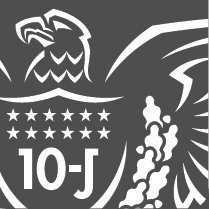The Federal Reserve System was created by Congress in 1913. The responsibilities of the Federal Reserve include influencing the supply of money and credit; regulating and supervising financial institutions; serving as a banking and fiscal agent for the United States government; and supplying payments services to the public through depository institutions like banks, credit unions, and savings and loans. Payments services include issuing, transferring and redeeming U.S. government securities, processing and clearing checks, and transferring funds.
The Federal Reserve’s structure comprises the Board of Governors in Washington, D.C., and 12 regional Reserve Banks.
What do we do?
The Fed’s three functions are to:
- conduct the nation’s monetary policy,
- provide and maintain an effective and efficient payments system, and
- supervise and regulate banking operations.
Although all three roles are important in maintaining a stable, growing economy, monetary policy is the most visible to many citizens. Monetary policy is the strategic actions taken by the Federal Reserve to influence the supply of money and credit in order to foster price stability and maintain maximum sustainable economic growth. Through these actions, the Fed helps keep our national economy strong and the world economy stable.
Regional Reserve Banks
The Federal Reserve System has 12 Districts, each served by an independently chartered regional Reserve Bank. These Banks are in Atlanta, Boston, Chicago, Cleveland, Dallas, Kansas City, Minneapolis, New York, Philadelphia, Richmond, St. Louis and San Francisco. There are also 25 Branch offices within the 12 Districts.
Kansas City is the headquarters for the 10th Federal Reserve District. Our Branch offices are in Denver, Oklahoma City and Omaha.
Board of Governors
The Board of Governors consists of seven members who are appointed to 14-year terms by the president of the United States and confirmed by the Senate.
The Board conducts monetary policy, issues regulations under most federal consumer credit protection laws and has broad responsibility for the U.S. payments system and the activities of various banking organizations. The Board also has general oversight over the Reserve Banks and Branches.
Federal Open Market Committee (FOMC)
The rate-setting FOMC is made up of seven Fed Governors and five of the 12 Reserve Bank presidents, who vote on a rotating basis with the exception of the New York Fed president, who always votes. All 12 Reserve bank presidents participate in FOMC policy deliberations whether or not they are voting members. The FOMC meets eight times a year.
Other Resources
- External LinkThe Federal Reserve System Online
A list of various Federal Reserve websites related to banking, financial services, education, consumer help and more. - External LinkThe Federal Reserve System: Purposes & Functions
An overview of the Federal Reserve System's history, structure, purpose and functions. - External LinkThe Structure of the Federal Reserve System
An explanation of how the Board of Governors and the 12 Reserve Banks and their Boards of Directors work together. - External LinkFAQs
A list of frequently asked questions on the Board of Governors website. - External LinkFOMC
A look at how the Federal Open Market Committee works.
